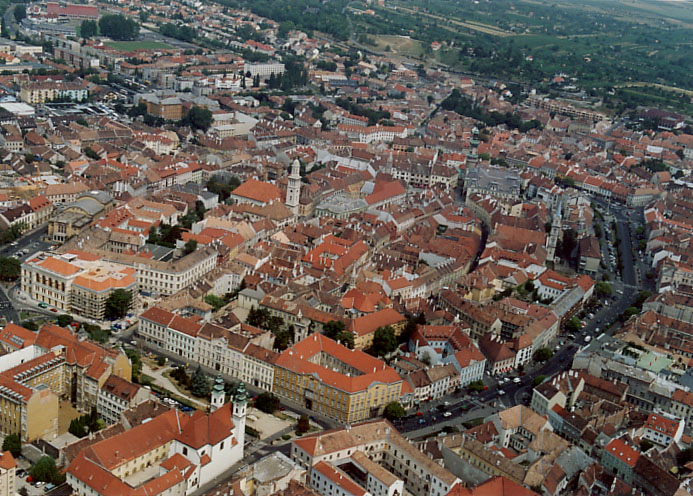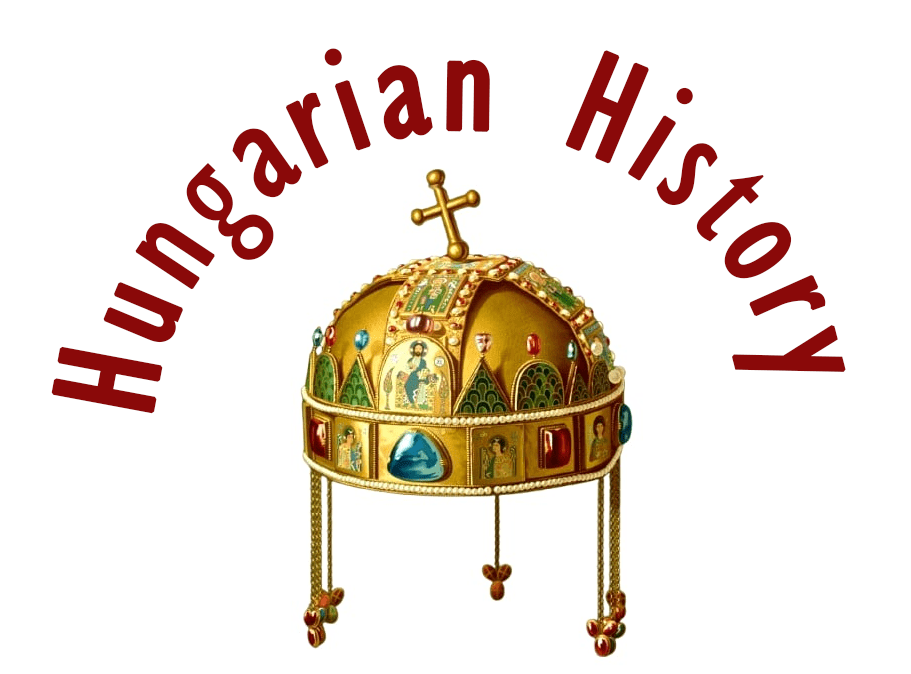It was 104 years ago on this day that the Ragged Guard first went into action. On 28 August 1921, the Austrian gendarmerie crossed the old Hungarian border to enforce the peace treaties around Paris and take possession of the territories awarded to Austria.

The uprising began in Burgenland and the Sopron region. The parties clashed at Ágfalva, where Héjja’s 120 men (the Alföld Brigade) exchanged fire with the Austrian gendarmes.
The insurgents of the Ragged Guard, led by Francia Kiss Mihály, Kaszala Károly, and Maderspach Viktor, among whom were a good number of students of the Selmecbánya Mining Academy, which had moved to Sopron, routed the Austrian gendarmes at Ágfalva.

On the same day, Major Ostenburg-Moravek Gyula, who had taken command of the Hungarian gendarmerie forces stationed in Sopron, refused to evacuate the city. He said, “I swear to you that I will not leave Sopron alive!”
The “Ragged Guard” (Rongyos Gárda) fought a guerrilla war with the Austrians, making it impossible for Austria to take possession of the territory it had been ceded to the Austrians. There were rebels in every village east of Sopron.

After about a month and a half of fighting, the rebels, supported by the Croatian and Hungarian populations, drove the Austrian armed forces out of Western Hungary.
In the fighting, or rather skirmishes, small irregular Hungarian forces fought with Austrian gendarmerie units of similar strength. The Hungarian state leadership could not formally support the fighting of the Ragged Guard because of the country’s isolated position, but did not surrender the territory and waited for a favorable end to the fighting.

However, the confrontation was not only between Austria and Hungary and between the rebels and the population, but also between the rebels themselves, because while Prónay and Héjjas belonged to the Free King Voters, the former prime minister, Friedrich István, who also belonged to the rebels and controlled Kismarton, and Ostenburg were both Legitimists.
Horthy appointed the future prime minister, Gömbös Gyula, as government commissioner for western Hungary, with the task of controlling the rebels who were becoming independent. Both Héjjas and Friedrich refused his order to withdraw.

It seemed that Prónay alone wanted to implement the Sigray-Lingauer plan, that if the Hungarian government would reconcile with Austria and give up Western Hungary, the rebels would create an independent state called Lajtabánság.
The king would be either High Commissioner Sigray or Archduke Albrecht. But the possibility of a referendum came within reach, and the Prime Minister talked Sigray out of his plan. On October 3, 1921, Western Hungary was placed under the jurisdiction of the Entente.

Proclamation of a State of Lajtabánság
The center of the Lajtabánság became Felsőőr, and in front of the church of Felsőőr, they declared the independence of the territory and their refusal to submit to the peace treaty. Prónay became the leader of the province.
The chairman of the Governing Council and the chairman for religious affairs was Captain Apáthy László, the chairman for foreign and judicial affairs was Lieutenant Lévay Ferenc, lawyer, the chairman of internal affairs was Captain Bárdos Béla, the chairman for economic affairs was Lieutenant Hir György, member of the Hungarian National Assembly.

The return of Sopron
In the end, the decisive action of the rebels favored Hungary. The Austrian and Hungarian sides, mediated by Italy, agreed in a negotiation in Venice on 11 October that the city of Sopron and its immediate surroundings would be subject to a referendum on its identity.

Although the fate of the town at the foot of the Lövérek Hills was indeed decided by referendum, the heroic fight of the Ragged Guards also played an indispensable role in the eventual return of the area to Hungary.
The Ragged Guard
The aim of the self-organized (irregular) armed group was to resist the communists during the Soviet Republic, to keep the Sopron area, which was taken from Hungary in the Trianon Peace Treaty, and also to regain other occupied territories for Hungary. They were established on 18 April 1919, from a mixture of patriotic officers and soldiers, poor day laborers, and remnants of the Székely Division who had experienced the First World War.

Around a hundred Bosnian and Albanian Muslim volunteers led by Duric Hilmi Hussein joined the uprising. One soldier, Ahmet, was killed in the fighting with the Austrians and became a martyr of the uprising in Western Hungary.
Many of the anti-communist organizations and supporters of the counter-revolutionary governments that were organizing against the Soviet Republic became members of what was to become the Ragged Guard. Many of them came from the Hungarian Great Plain (Alföld) and from the Székely Division.
These irregular soldiers also held radical views, and the documents of Captain Szabó József show that they did not even shy away from semi-terrorist methods.Without them, even larger territories would have gone to Austria after 1919.

The Seven Points of the Ragged Guard
1. Hungary belongs to the Hungarians. Hungary’s borders are not the borders of today, but the borders before the war. For these and for our Hungarian nation, we are ready to give our lives at any moment.
2. We are fighting against the godless and unpatriotic destroyers, but also against feudal birthright privileges.
3. Pacifism is just a pipe dream – as many guns as you have, so goes your country and your bread.
4. The maximum limit of a unit of landed property is determined by the development of the means of agricultural production. We demand a land reform for the benefit of our penniless peasantry, who for four years have been honorably sacrificing their blood for the sake of the universal Hungarian population and the welfare of the people.
5. In the matter of banking and industrial capital, the state should have the decisive say in the interests of the people – and not vice versa.
6. In the struggle between employer and worker, let the state power stand by the worker as a just defender.
7. Hungarians should be the leaders on all levels of Hungarian life.
After 1921
The members of the Ragged Guard later took part in the military mission in 1938 that aimed to take back the Kárpátalja (Subcarpathian Region) from Czechoslovakia.
In 1938, before the first Vienna decision, the Ragged Guard was reorganized. In the first days of October, around a thousand ‘rag-tag’ volunteers infiltrated across the Czechoslovak border to put pressure on the Czechoslovak government and international public opinion.
The Guards created confusion among the enemy by cutting telephone and telegraph wires and launching guerrilla attacks on military units, before moving northwards and crossing into friendly Poland.
On 6 January 1939, the lightly armed Ragged Guards, supported by the local population and police, repelled an attack by the Czechoslovak forces in the Subcarpathian Region in Munkács, which was supported by Czech armored tanks.
In the Soviet Winter War against Finland in the winter of 1939-40, many of the Hungarian volunteers who fought on the Finnish side were former members of the Guard. The Hungarian corps made a very good impression on the Finnish public, although the length of the journey meant that they could no longer take part in actual combat.
Many of the members of the Guard (Bosniaks and Hungarians together) fought in Poland around 1944 on the side of the so-called Home Army against the German Nazis.
Respect to the heroes.
Source: Ezerarcú Világ and Hungarian Wikipedia

Dear Readers, I can only make this content available through small donations or by selling my books or T-shirts.
Please, support me with a coffee here: https://www.buymeacoffee.com/duhoxoxa
You can check out my books on Amazon or Draft2Digital. They are available in hardcover, paperback, or ebook:
https://www.amazon.com/dp/198020490X or at https://books2read.com/b/boYd81

My work can also be followed and supported on Patreon: Become a Patron!http://Become a Patron!
Become a Patron! Donations can be sent by PayPal, too: https://tinyurl.com/yknsvbk7


https://hungarianottomanwars.myspreadshop.com/all
Subscribe to my newsletter here: https://tinyurl.com/4jdjbfkn

